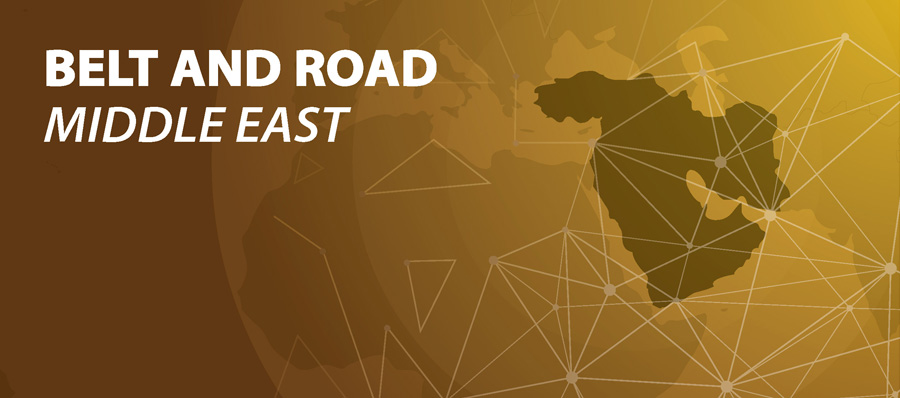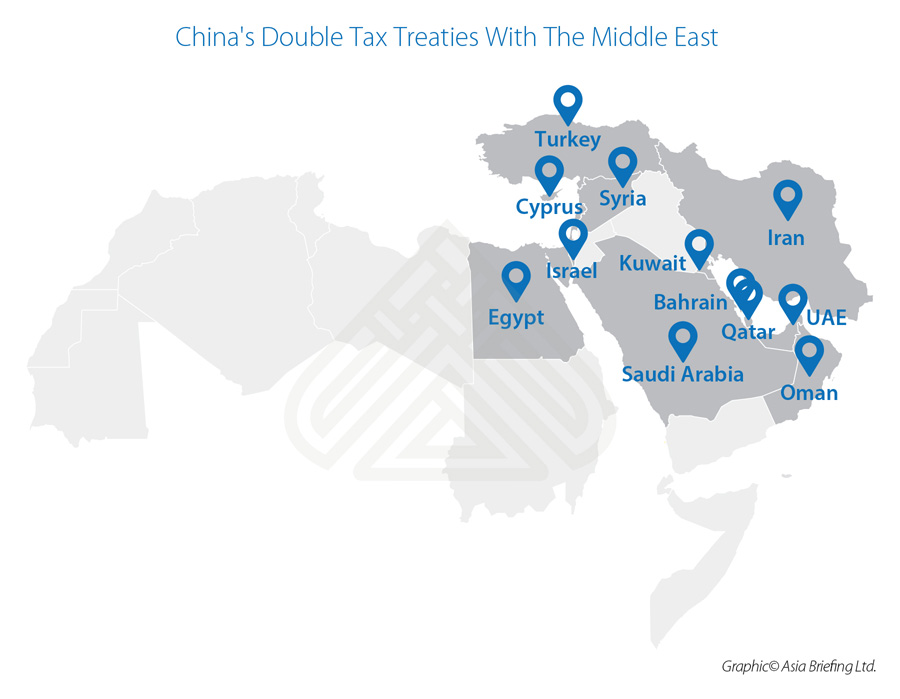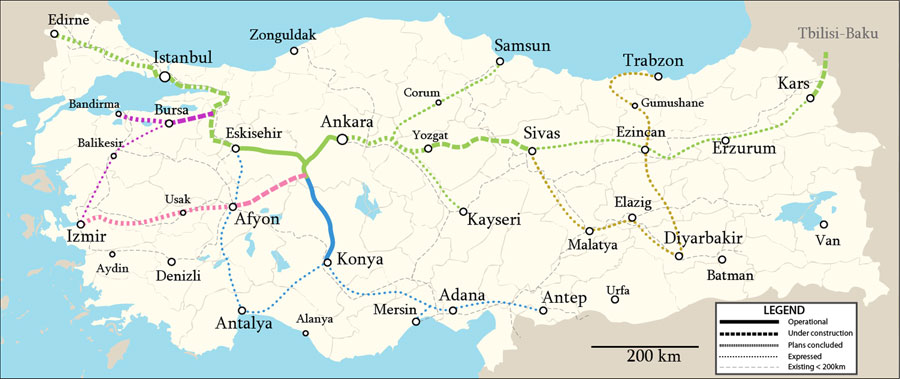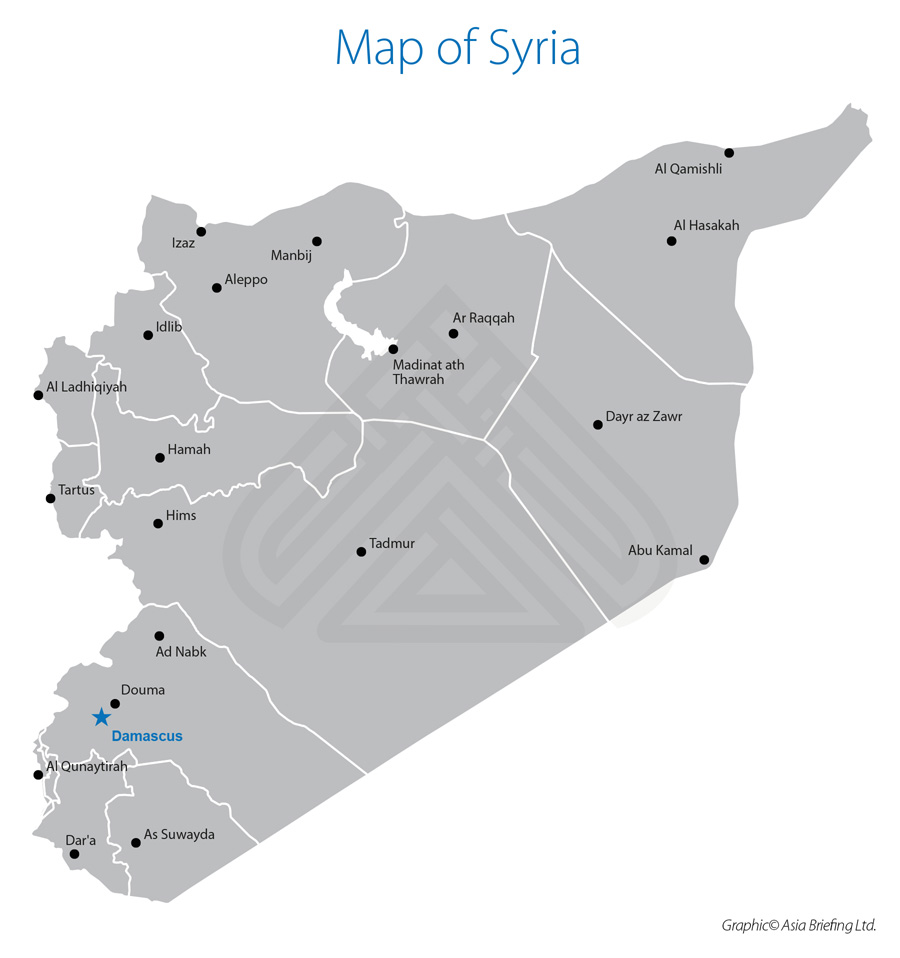China’s Belt & Road Initiative In The Middle East

Op/Ed by Chris Devonshire-Ellis
China’s involvement with the Middle East – including the countries of Bahrain, Cyprus, Egypt, Iran, Iraq, Israel, Jordan, Kuwait, Lebanon, Oman, Palestine, Qatar, Saudi Arabia, Syria, Turkey, the UAE and Yemen comprises a huge and diverse area split across continental lines, religions, and trade blocs. All have signed MoU with China’s Belt & Road Initiative.
In terms of the mix, they comprise members of the European Union (Cyprus), the Arab League Welcome.aspx (Egypt, Iraq, Jordan, Lebanon, Palestine & Syria), the Economic Cooperation Organization (Iran & Turkey), the Organization of Islamic Cooperation (Egypt, Iran, Jordan, Lebanon, Palestine, Syria & Turkey) and OPEC (Iran & Iraq). This illustrates both the complexity of China’s Belt & Road and in some part of China itself, which has long had Christian, Jewish, and Muslim minorities of its own. China, always pragmatic, and being officially atheist, can claim to be non-partisan, which probably helps cross bridges between nations that in some cases have long been at each others throats. Much of this grouping is accessed by China through a number of official platforms, most notably the China Arab States Cooperation Forum although this doesn’t include Iran Israel, Syria or Turkey) and the Shanghai Cooperation Organization which Iran has joined and of which Turkey is a Dialogue Partner. Syria meanwhile has had its membership of several international institutions suspended in the aftermath of alleged Government use of weapons against its own people in the recent civil war. China tends to deal with Israel either directly or via the United Nations.
China’s trade and relations with the China-Arab States Cooperation Forum (CASCF) however are significant. An excellent PDF download can be accessed here which showcases the extent of trade China has with Arabic nations.
In terms of Tax treaties, China has signed off Double Tax Treaties with the following Middle Eastern nations. These are highly specific documents that contain the exact tax mechanisms deployable between China and the country concerned, and are valuable as they can be used to reduce taxes on agreed products and services described within the treaty as well as offset profits tax via using withholding tax alternatives. (Professional assistance is needed with this). We provided an article on Understanding China’s Double Tax Treaties here

The region is of specific interest to China in terms of the Belt & Road Initiative as it offers the prospects of developing road, rail and port access to major markets, including prizes such as the reconstruction of Syria and Iraq in addition to cementing access to the European Union. It is also hugely significant to China as an energy play, meaning projects are of both commercial and strategic importance to China within the region.
Iran
China is a long time ally of Iran and has vested interests, along with Russia, in the nations oil and gas industry. China is financing the upgrading of the Tehran-Mashhad railway with China’s Exim Bank lending US$1.5 billion for the lines electrification. The track is a section of east heading, 2,300 km line that will ultimately link Urumqi, the capital of China’s western Xinjiang Province, to the Iranian capital Tehran, connecting Kazakhstan, Kyrgyzstan, Uzbekistan and Turkmenistan along the way.
From Tehran, the rail project will join Iran’s east-west network leading west to Turkey and eastern Europe. It could also open a way to Europe via a developing rail route from southern Iranian ports to Azerbaijan and Europe, and will link with Iran’s North-South Transport Corridor, which runs from Chabahar Port north through to Azerbaijan. We discussed India’s involvement with the development of this in the article Belt & Road Initiative: India.
Heading further east, this links up with the also Chinese funded, low key “Lapis Lazuli Corridor”, which I wrote about in the article “China Funded Lapis-Lazuli Transport Corridor Unites Caucasus & Central Asia”
Turkey
As mentioned above, rail will extend from Tehran into Turkey and across to the borders with the EU. In addition to this, Turkey is also being linked up with rail freight lines running further north via China and across Kazakhstan, to Baku in Azerbaijan. The Baku-Tbilisi-Kars Railway, which we wrote about here provides another direct link through to Europe from China, via Turkey as it connects through to a cross-Turkey, high speed rail service also being built by the Chinese, that connects Kars with Edirne, close to Turkeys border with Bulgaria and Greece.

The Iranian links discussed above and the East-West lines to Europe cement Turkeys position as a Belt & Road crossroads, illustrated also by Turkey’s largest FDI from China being the 2015 acquisition of Turkey’s third largest port, Kumport, in Istanbul by the Chinese giant container terminal operator Cosco Pacific for US$940 million. Cosco now holds a 65 percent stake in the port. Meanwhile, the volume of bilateral trade between Turkey and China was recorded at US$26.3 billion in 2017. Turkey’s exports to China totaled nearly US$3 billion while its imports from China exceeded US$23 billion.
These figures can be expected to rise significantly. I wrote in more detail about Turkey’s involvement in the Belt & Road in the article “Turkey’s Pivotal Role In China’s Belt & Road Initiative With Europe, Central Asia And The Middle East”
Syria & The Lebanon
Other regional developments are aimed squarely at Syria. This is both an opportunistic and geopolitical play; opportunistic as Chinese contractors are looking at reconstruction projects to rebuild the country after its devastating civil war, and geo-political as China recognizes that Syria can provide an alternative route to Europe than the Suez Canal. This part of the Middle East, also known as The Levant, is being developed by the Chinese with a Special Economic Zone being built in Tripoli Port, and plans to reconstruct the Tripoli-Homs Railway. The zone provides Chinese (and other regional businesses) with low tax options for consolidating and adding value to component parts sourced elsewhere to then be exported to Syria. UN estimates that rebuilding the country will cost about US$250 billion. China can do that and in return secure energy supplies – Syria is oil rich – while at the same time develop a secondary route to the Mediterranean and southern Europe.

Israel
These moves will impact upon Israel. China is a big investor in Israel and has plenty of opportunity in the market – Israel’s population is expected to double in size over the next 30 years. It will require an investment of over US$200 billion to meet the needs of its population’s real estate, transportation, energy, telecommunications, and other infrastructure needs. Its ports and trade routes to the Middle East make it a significant gateway to Europe for the Middle East, which China wants to capitalize on.
In terms of Saudi Arabia, and the other Arabian states, these make up most of the energy play that China is concerned with. Projects here include gas pipelines, to meet not just Chinese demand but also a better interconnected energy network across the region. That fits in with China’s secondary goals in terms of developing commerce.
However for the most part, the Belt & Road Initiative on the infrastructure element sees Chinese rail, road, ports and airports linked together in a direct connection from China’s national railway system existing the country at Urumqi in its Western Xinjiang Province, and continue West in routes that also connect with the Iranian North-South Transportation Corridor and to the Caucasus and Russia, as well as West through routes across Turkey and south to future Mediterranean ports in Syria, Lebanon and Israel. In this it is joined by Russia, whose businesses and government also has close ties with the region and is also looking to participate in the energy sector as well as reconstruction.
Cyprus, as the only EU member in the region, is also an offshore financial centre and can offer banking and related management services to the eastern Mediterranean and beyond. It may face competition in this regard from Malta, another quasi offshore jurisdiction.
From here, China’s ambitions head further south-west to Egypt, which is another Belt & Road nation attracting plenty of Chinese interest. As part of the new African Continental Free Trade Area it offers plenty of room for business development and growth, and with a DTA with China provides excellent opportunities for companies based there to export to China. I discussed the implications of Egypt’s Belt & Road ambitions with China, and that of Africa as a whole, in the recent article “China’s African Moves Through The Belt & Road, Double Tax Treaties And AfCFTA” Russia is also close behind, having established a Free Trade Zone in Port Said, near the Suez Canal.
In regional terms, it is both China and Russia who vie for involvement in the development of infrastructure, securing energy supplies and putting the platforms in place to secure future trade routes. Looking at how to get involved with this is both a tax issue – examining the applicable Double Tax Treaties I have mentioned is a good place to start – as well as examining the details in potential contracts. The Belt & Road Initiative will, in time, re-integrate the Eastern Mediterranean, Turkey and the Caucasus, and should political issues between the United States and Iran ease up, open up a huge corridor between Europe and Asia. How successful China will be in this will be apparent within the next five years.
About Us
Silk Road Briefing is produced by Dezan Shira & Associates. The firm provides business intelligence, legal advisory, tax advisory and on-going legal, financial and business operational support to investors throughout China, India, ASEAN and Russia, and has 28 offices throughout the region. We also provide advice for Belt & Road project facilitation. To contact us please email silkroad@dezshira.com or visit us at www.dezshira.com
 Related Reading:
Related Reading:
![]() Baku, the City to Watch as China’s Belt and Road Divides the Caucasus
Baku, the City to Watch as China’s Belt and Road Divides the Caucasus
![]() Aqtau Port, Kazakhstan’s Caspian Sea Belt and Road Window to Europe
Aqtau Port, Kazakhstan’s Caspian Sea Belt and Road Window to Europe
![]() Russia, Iran, and Turkey Establish Foreign Trade Action Plan to Cease US Dollar Trade
Russia, Iran, and Turkey Establish Foreign Trade Action Plan to Cease US Dollar Trade





